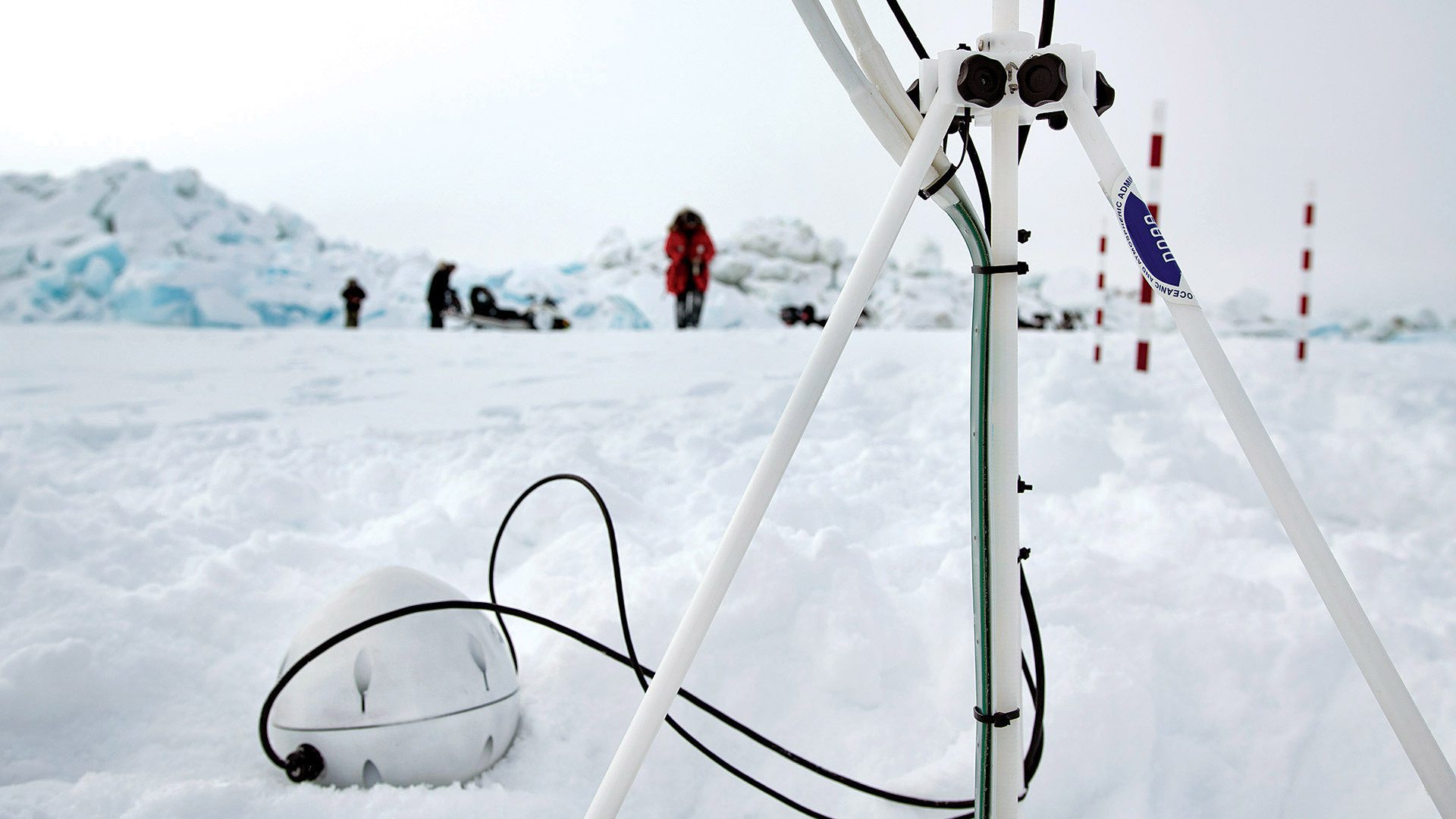- September 23, 2020
- By Sala Levin ’10
Sensors deployed in the Arctic provide critical information to scientists such as thickness of ice, and air and water temperature. But the devices can cost $40,000 each, and researchers are lucky if the sensors make it a full year before being encased in ice or succumbing to a curious polar bear.
Cy Keener knows this firsthand. The UMD assistant professor of sculpture and emerging technology lost his last two sensors in 2019 to those exact perils. Now he’s hoping to make sensors more accessible and less expensive for himself and other researchers through a nearly $207,000 grant from the National Science Foundation.
 The five-year grant will allow Keener to continue to develop and test a low-cost, open-source buoy to provide meteorological and oceanographic data, a project he has been working on since 2016. In collaboration with Ignatius Rigor, a senior principal research scientist at the University of Washington, the grant enables Keener to join Rigor’s team for annual travels to the Arctic, and funds new visual art pieces depicting the thinning of Arctic Sea ice.
The five-year grant will allow Keener to continue to develop and test a low-cost, open-source buoy to provide meteorological and oceanographic data, a project he has been working on since 2016. In collaboration with Ignatius Rigor, a senior principal research scientist at the University of Washington, the grant enables Keener to join Rigor’s team for annual travels to the Arctic, and funds new visual art pieces depicting the thinning of Arctic Sea ice.
Keener is working with the UMD Office of Technology Commercialization and outside counsel to form a company that will manufacture and sell a deployable sensor package for roughly $500, a fraction of their current commercial cost. This could “double the number of sensors” currently operating in the Arctic Ocean, he said, potentially enhancing a critical dataset used in weather forecasting and studies of climate and climate change.
Collaborating with the U.S. Naval Academy, Keener is also developing a sensor package that can survive being dropped from an airplane.
“That’s the way to get more of them in the field, because access is really difficult,” Keener said. He hopes to be able to eventually deploy 200 sensors annually, a significant increase from the five or six he’s used in the past.
Keener traveled to the Arctic in Spring 2019 with Rigor, the coordinator of the International Arctic Buoy Programme, whose members maintain a network of buoys across the expanse of the Arctic Ocean. On that trip, Keener installed measuring instruments that he then used to create a series of art pieces.
At VisArts Gallery in Rockville, Maryland, he displayed “Sea Ice 71.348778º N, 156.690918º W,” an installation that used hanging strips of 6-foot-long, blue-green polyester film to reflect the thickness and color of the Arctic ice as collected daily via satellite from the buoys.
He also created various versions of “Digital Ice Core,” a sculpture piece that used electronics, data and satellite communication to link a remote field site with a digital light sculpture, made up of 1,000 LED lights. Viewers were then able to see a recreated version of the ambient light in the air, ice and ocean in close to real time.
“It’s an honor to be involved in this work and to use my art to get people to understand what’s happening up there,” he said.
Jessica Weiss ’05 contributed to this article.
Topics
Research